The AMD Radeon RX 9070: A Strong Contender in the Mid-Range GPU Market
The AMD Radeon RX 9070 enters the graphics card arena at an opportune moment. Following the release of Nvidia's latest generation, this $549 card directly challenges the underperforming GeForce RTX 5070. AMD decisively wins this matchup, making the RX 9070 a compelling choice for 1440p gaming.
However, the picture isn't entirely straightforward. AMD's own Radeon RX 9070 XT, a superior performer, is only $50 more expensive. While the 9070's approximately 8% lower performance aligns with its 9% lower price, the incremental cost for significantly better performance with the XT is difficult to ignore. Despite this internal competition, AMD presents a strong offering.
Purchasing Guide
The Radeon RX 9070 launches March 6th, with a starting price of $549. Expect variations in pricing across different models. Prioritize purchasing a model closest to the MSRP given its proximity in price to the more powerful RX 9070 XT.
AMD Radeon RX 9070 – Images

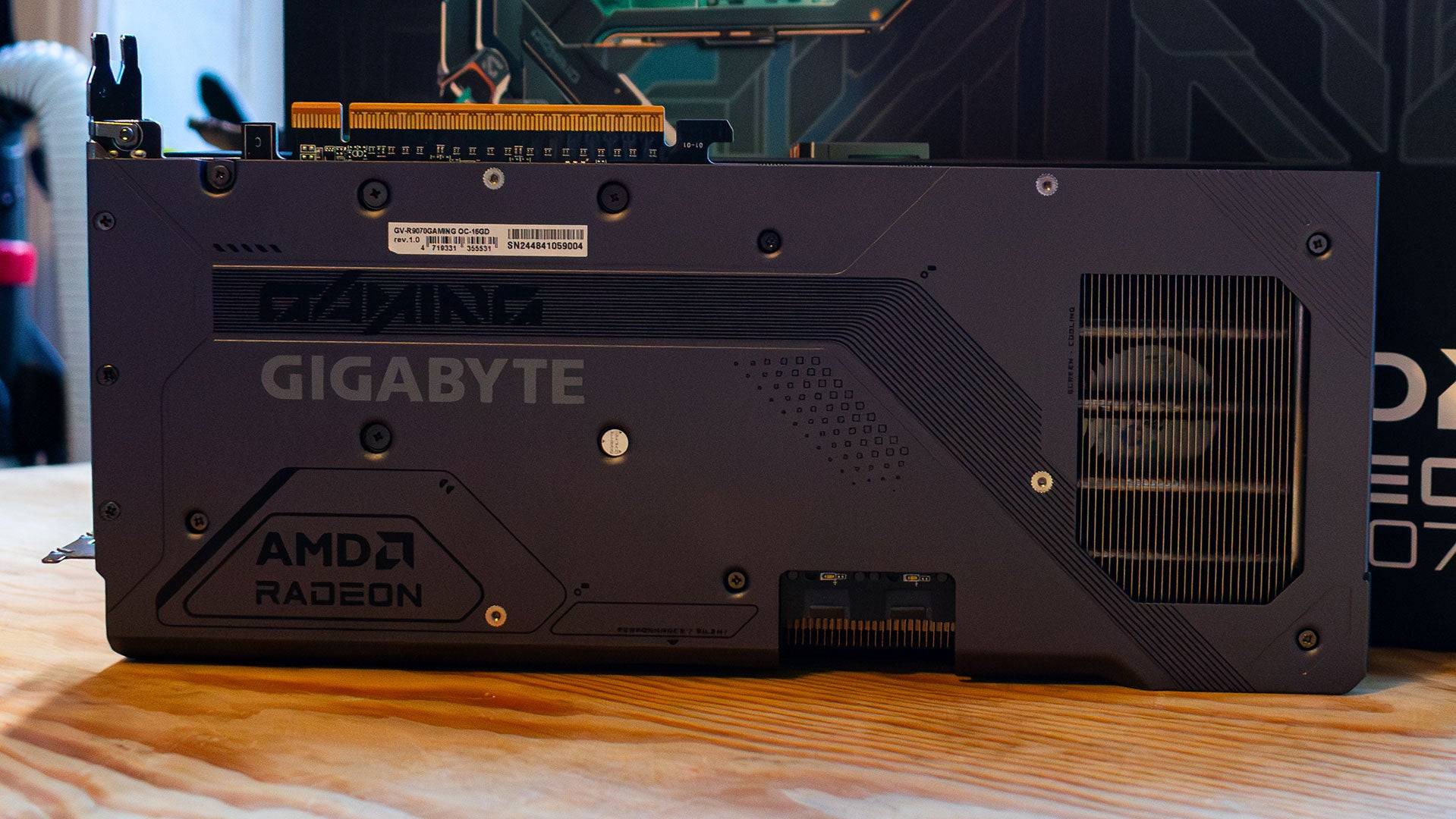 4 Images
4 Images
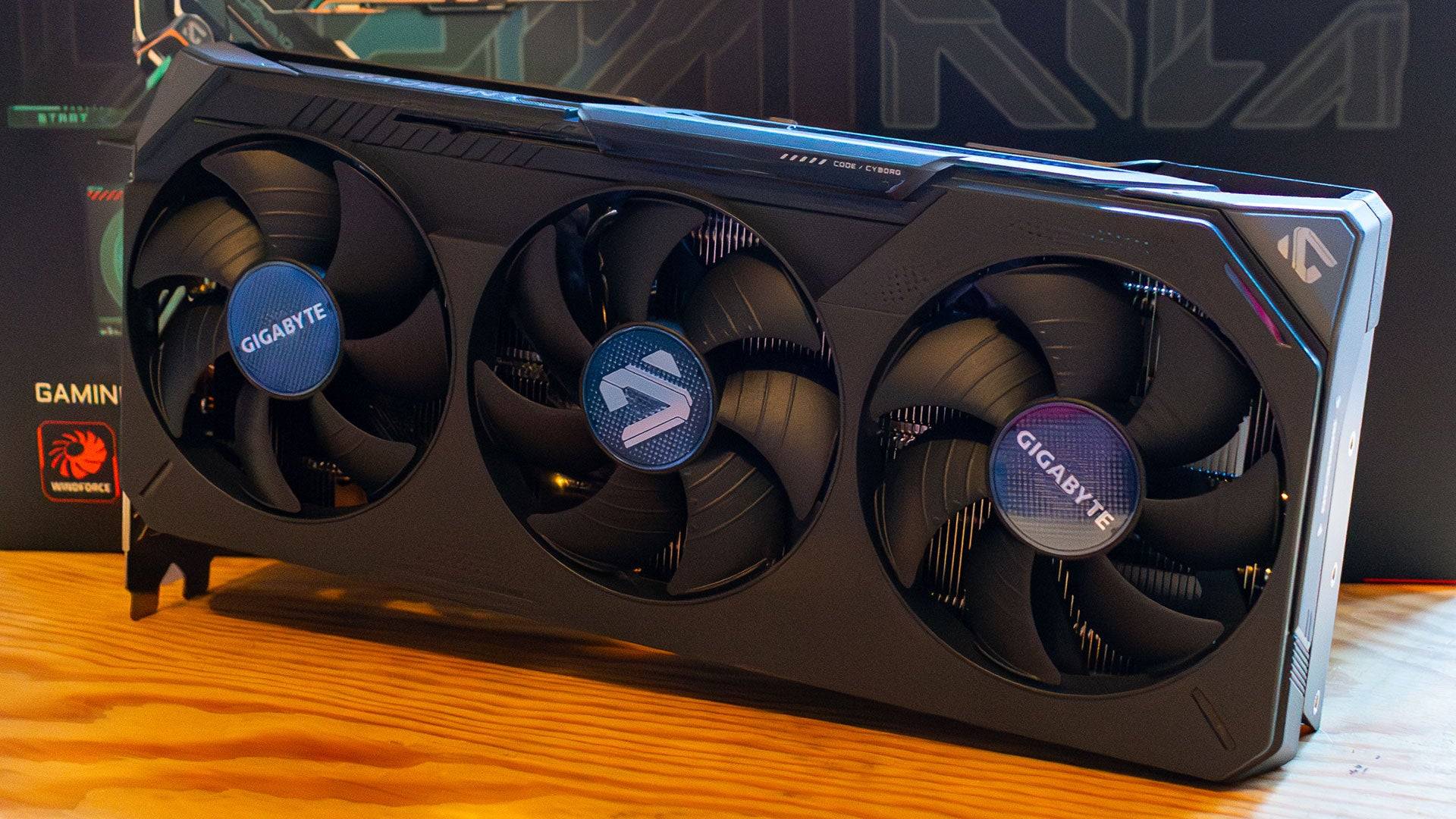
Specs and Features
Like the RX 9070 XT, the RX 9070 utilizes the RDNA 4 architecture. This results in substantial performance gains, significantly outperforming the previous generation Radeon RX 7900 GRE despite possessing 30% fewer compute units.
The RX 9070 features 56 Compute Units, each containing 64 Streaming Multiprocessors (SMs), totaling 3,584 shaders. Each compute unit includes one Ray Accelerator and two AI Accelerators, for a total of 56 and 112 respectively. These enhancements, particularly to ray tracing and AI acceleration, allow the card to compete effectively in ray-traced games. Furthermore, the improved AI Accelerators enable FidelityFX Super Resolution (FSR) 4, AMD's first foray into AI upscaling.
The card incorporates 16GB of GDDR6 VRAM on a 256-bit bus, mirroring the 7900 GRE's configuration and providing ample memory for 1440p gaming. While GDDR7 would have been beneficial, it likely would have increased the cost.
AMD suggests a 550W power supply, with a 220W power budget. Testing revealed a peak consumption of 249W, suggesting a 600W PSU is advisable for safety.
Importantly, unlike previous generations, AMD isn't releasing a reference design. All RX 9070 models will be from third-party manufacturers. The review unit was a Gigabyte Radeon RX 9070 Gaming OC 16G, a triple-slot card with a factory overclock.

FSR 4
Since DLSS's rise in 2018, AI upscaling has become a significant performance enhancer. Previously an Nvidia-exclusive advantage, FSR 4 brings this capability to AMD GPUs. It utilizes previous frames and in-game data via an AI model to upscale lower-resolution images to the native resolution. This differs from FSR 3's temporal upscaling, which lacked AI detail refinement, leading to artifacts.
FSR 4 introduces a slight performance penalty compared to FSR 3 due to the AI processing overhead. However, the Adrenalin software allows users to choose between FSR 3 (slightly better performance) and FSR 4 (better image quality).
AMD Radeon RX 9070 XT & 9070 – Benchmarks
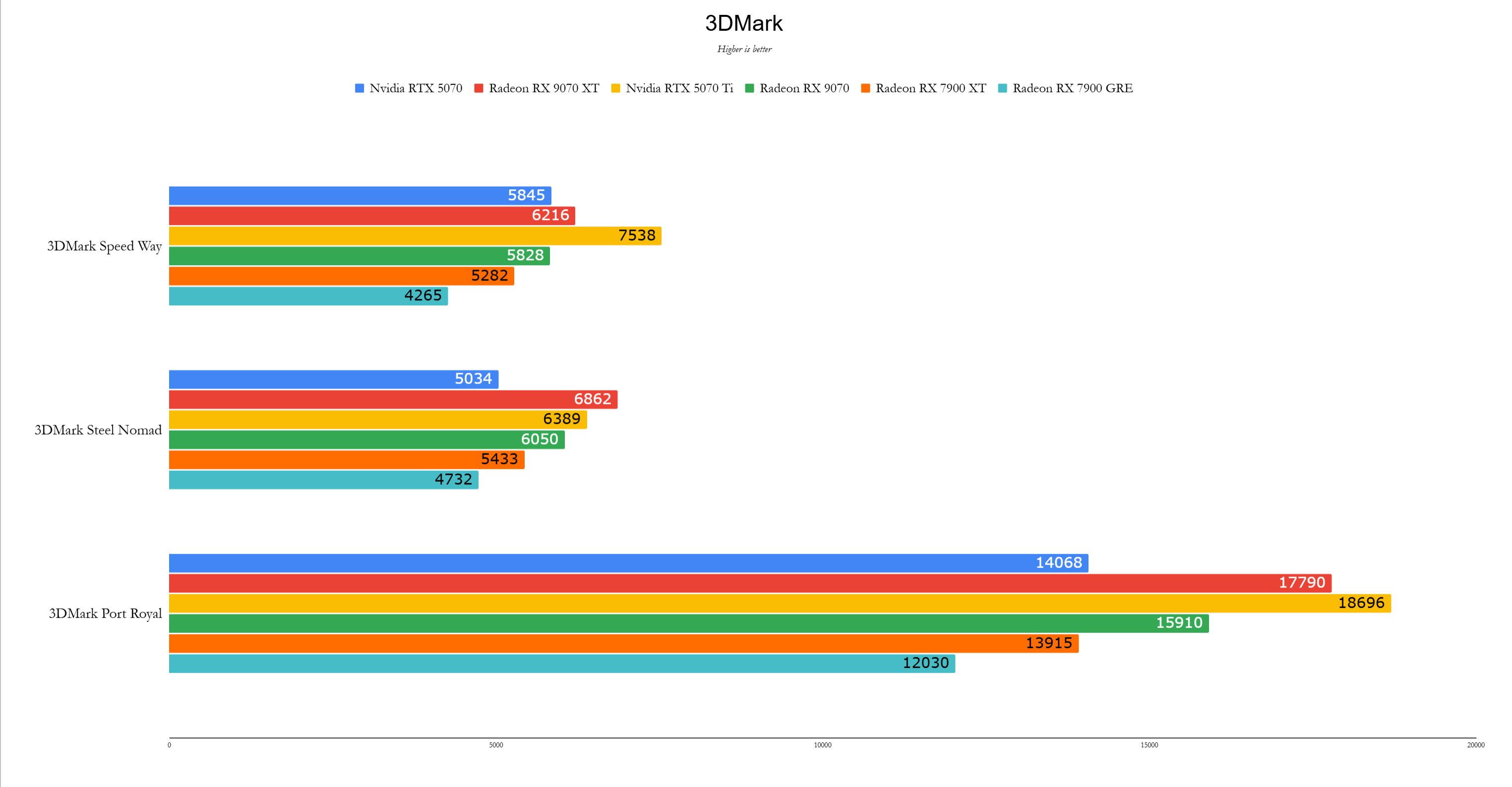
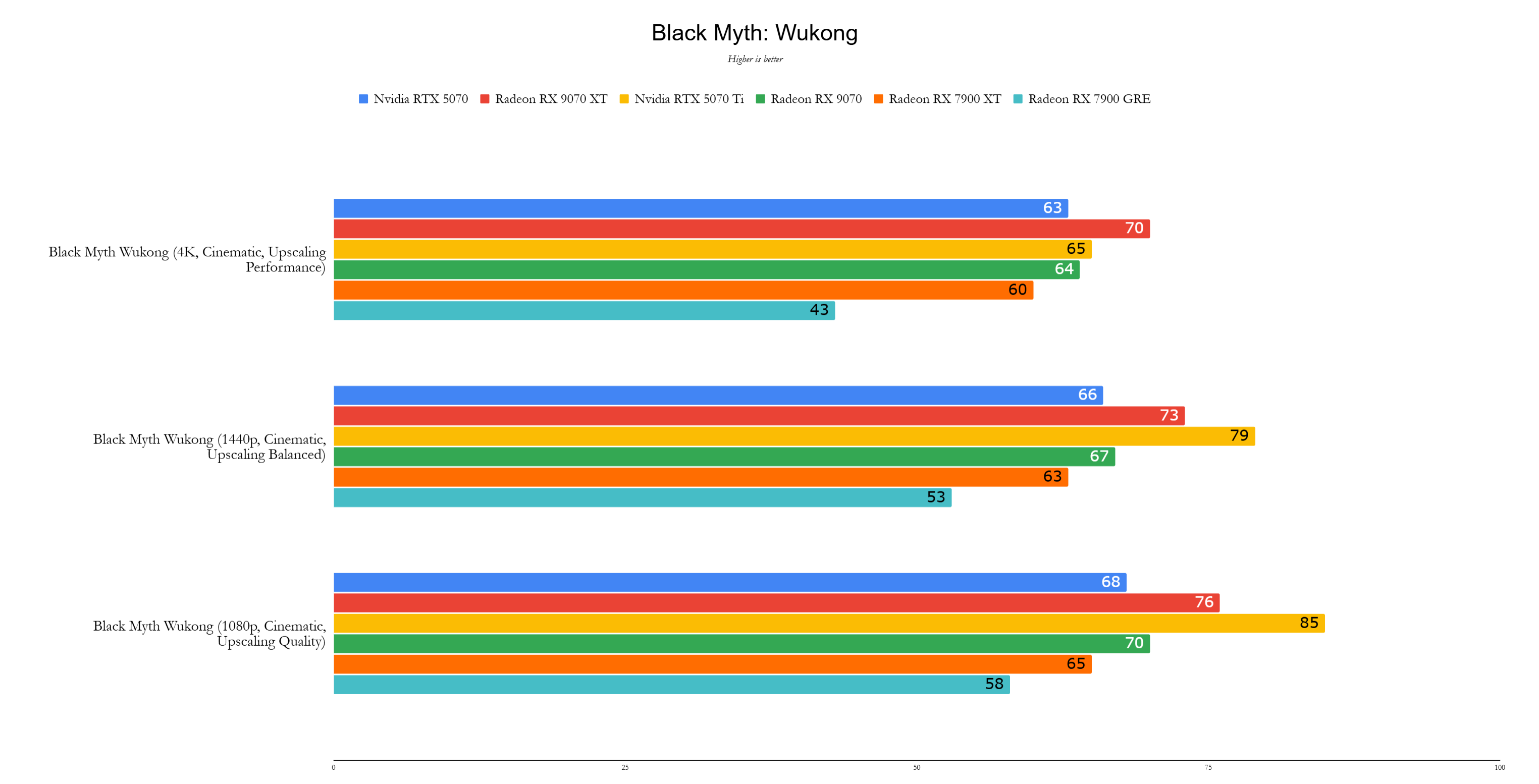 11 Images
11 Images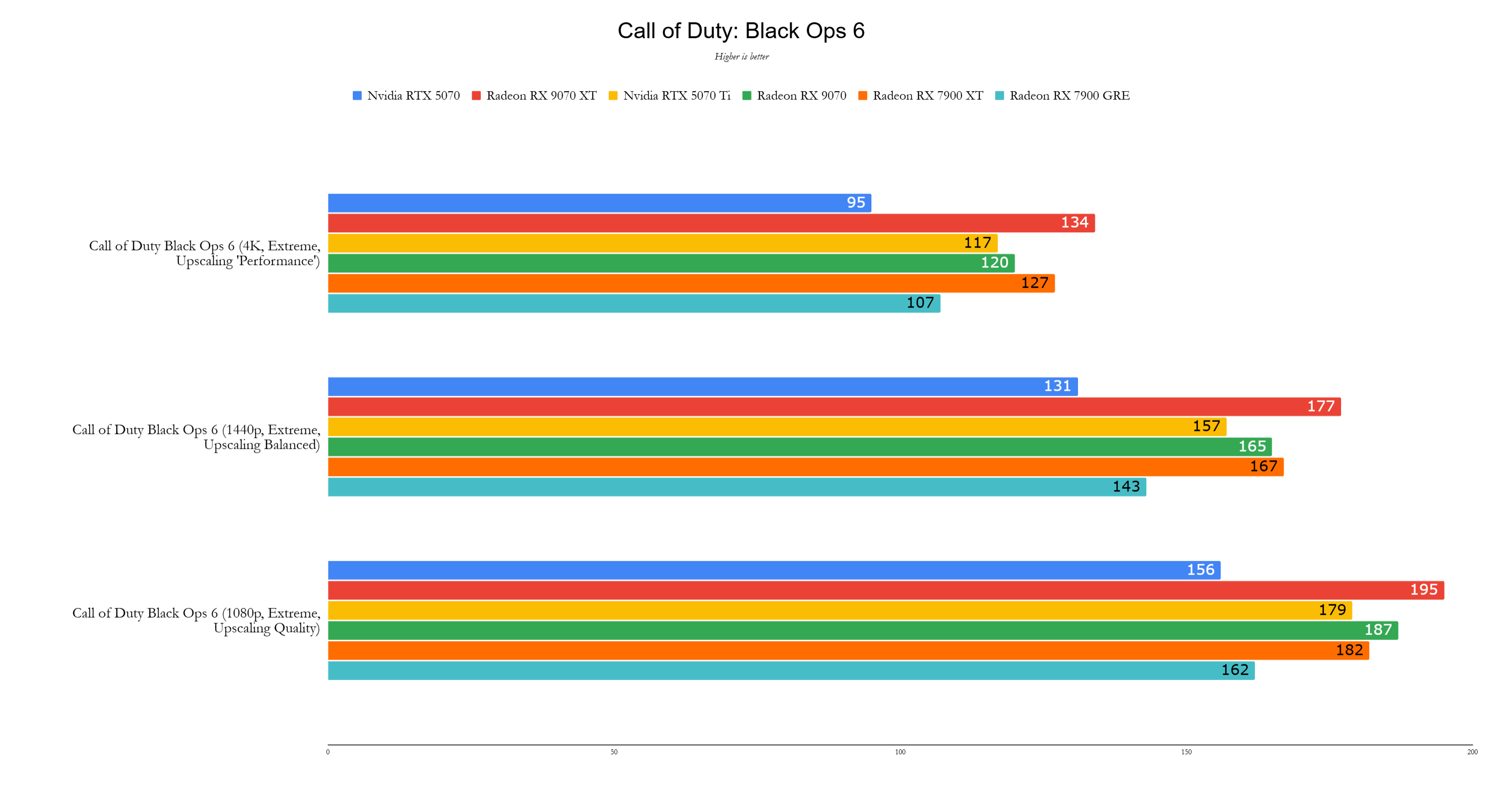
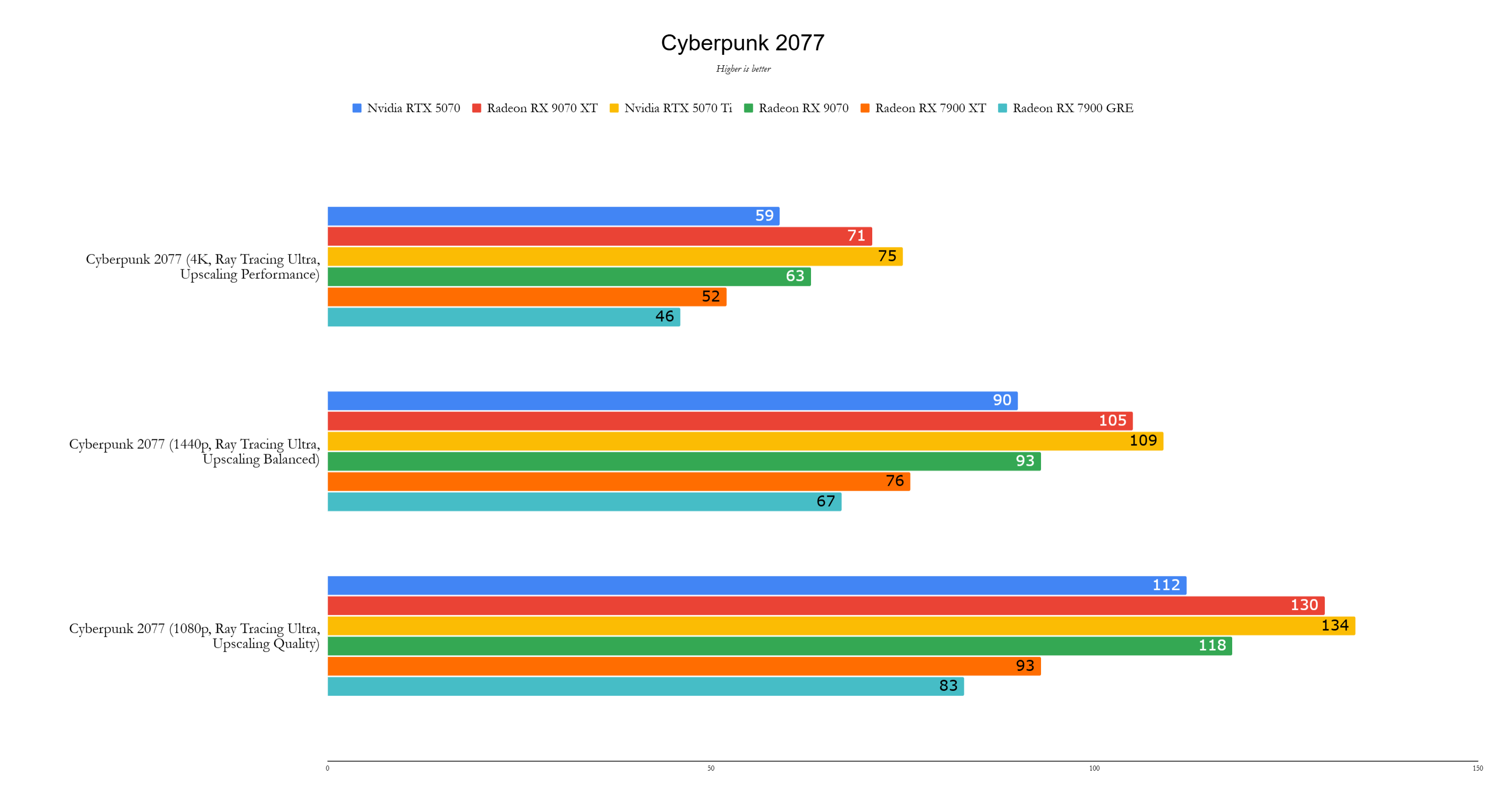
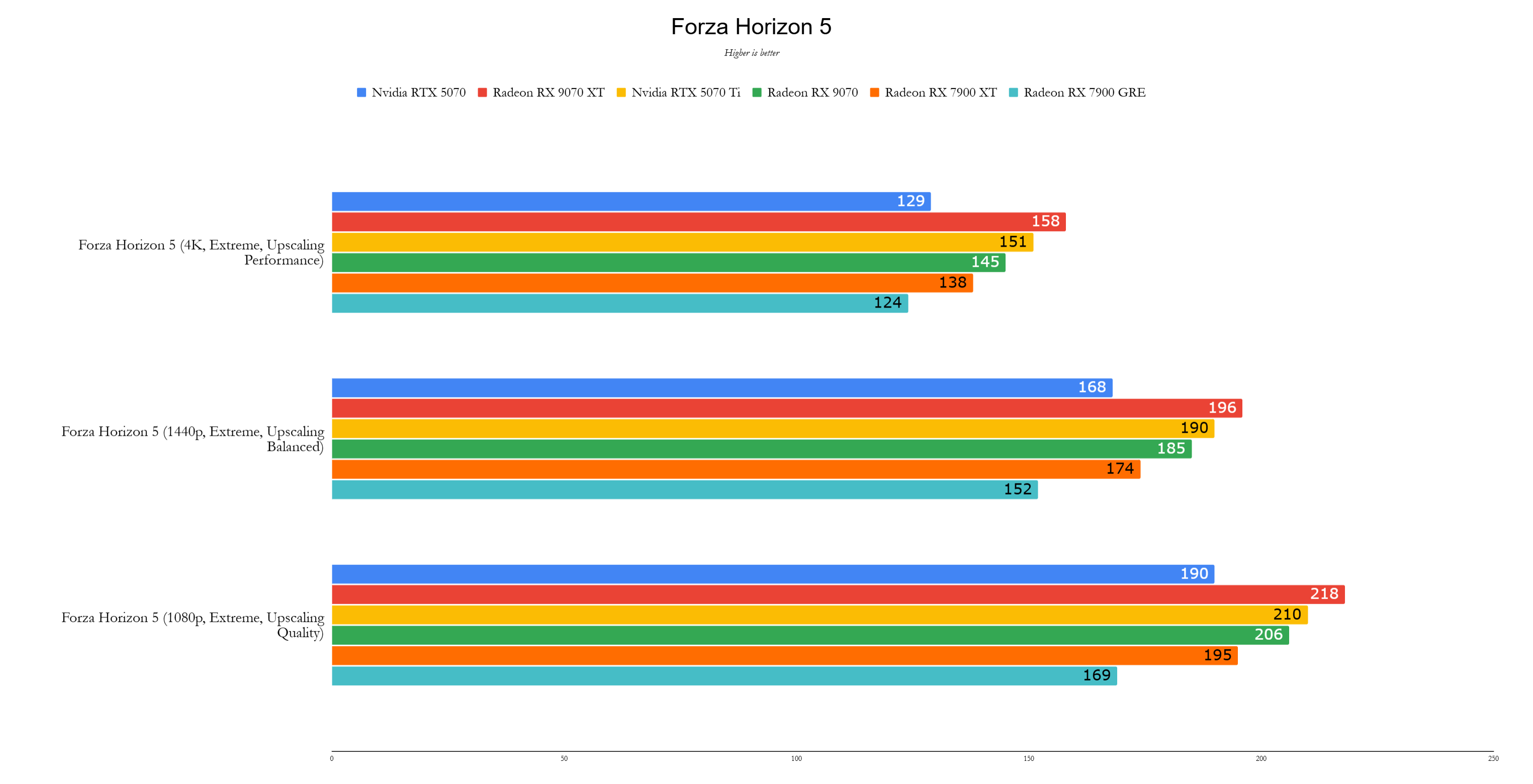
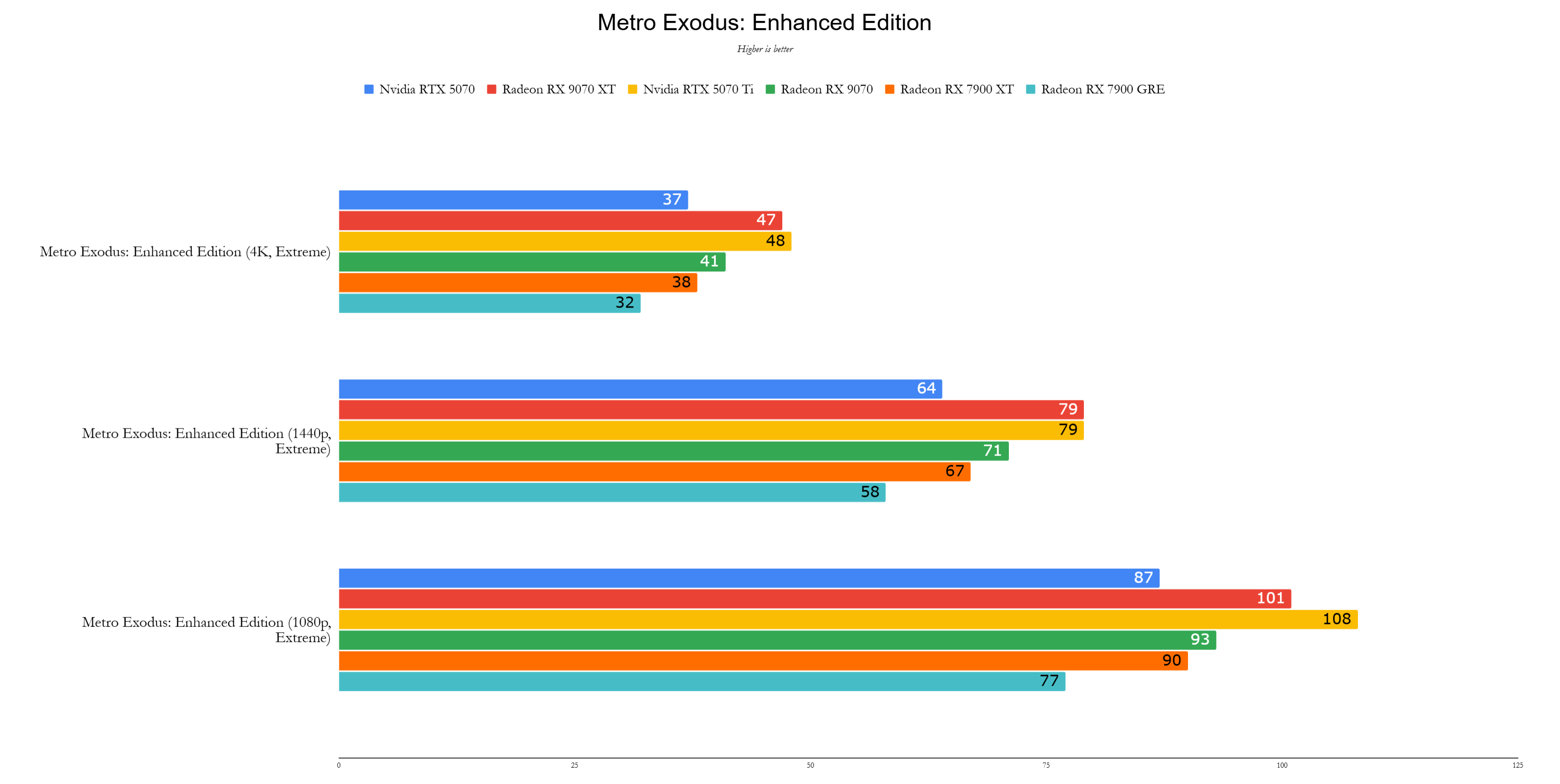
Performance
The RX 9070's $549 price point directly competes with the RTX 5070, consistently outperforming it. At 1440p, it's approximately 12% faster and 22% faster than the RX 7900 GRE. This improvement is remarkable considering the 30% reduction in cores. Note that the review unit had a factory overclock (approximately 7% boost clock), contributing to performance.
Benchmarking was conducted using current public drivers (Nvidia Game Ready driver 572.60 and AMD Adrenalin 24.12.1, with review drivers for the RX 9070, 9070 XT, and RTX 5070).
The RX 9070 shows strong results in 3DMark, particularly in Steel Nomad (20% faster than the RTX 5070). Game benchmarks reveal consistent advantages across titles like Call of Duty: Black Ops 6, Cyberpunk 2077, Metro Exodus, Red Dead Redemption 2, Assassin's Creed Mirage, and Forza Horizon 5, often surpassing the RTX 5070 by significant margins. Total War: Warhammer 3 showed comparable performance at 1440p, while Black Myth: Wukong yielded similar results.
Conclusion
The Radeon RX 9070's superior performance over the RTX 5070 at the same price point is impressive. Its 16GB VRAM provides future-proofing, further enhancing its value proposition. Even if performance were perfectly matched, the significantly larger VRAM would make it the superior choice. Combined with its performance advantage, the RX 9070 emerges as a compelling option in the mid-range GPU market.
 Home
Home  Navigation
Navigation






 Latest Articles
Latest Articles










 Latest Games
Latest Games












